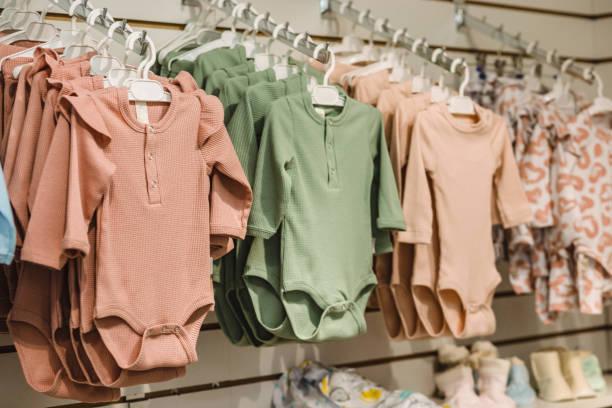Congratulations on the birth of your baby or the upcoming arrival of your bundle of joy!
As you prepare for this new chapter of life, one of the essential tasks is buying baby clothes. With so many options available, it can be overwhelming to know where to start. To help you make informed decisions, we have compiled a list of five important things to consider when buying baby clothes. From sizing to fabric choices, these factors will ensure that your little one is comfortable, safe, and stylish. So, let’s dive in and explore the world of baby clothing!
Safety Comes First
Safety should always be a top priority when buying baby clothes. Avoid clothes with small buttons, bows, or other decorative elements that could easily come off and pose a choking hazard for your baby. Check for any loose threads or embellishments and choose clothes with secure stitching and reinforced seams to ensure safety and durability. Look for sleepwear labelled as “flame-resistant” or “fire-retardant” that help to reduce accidents and ensure your baby’s safety while sleeping.
Fabric Selection
The fabric of baby clothes plays a significant role in ensuring your baby’s comfort. Young children have delicate skin that requires gentle care. When shopping for baby clothes, prioritize soft and skin-friendly materials. Cotton is a popular choice as it is breathable and hypoallergenic, making it suitable for babies with sensitive skin. Avoid synthetic materials that may cause irritation or discomfort to your baby’s skin.
Additionally, consider the ease of care when selecting fabrics. Babies can be messy, and their clothes are bound to get dirty. Choose machine washable fabrics that can withstand frequent washing without losing their shape or colour.
Size Matters
When it comes to buying baby clothes, size matters. Babies grow at an astonishing rate, so it’s crucial to choose clothes that will fit them comfortably. It’s advisable to buy clothes one size ahead of your baby’s actual age. For example, most 6-month-old babies can wear clothes sized 9-12 months. By doing so, you can ensure that your little one will have enough room to move and grow without feeling restricted. Keep in mind that various brands may have slightly different sizing charts, so be sure to check the specific measurements provided by the manufacturer.
Seasonal Weather
Another factor to consider is the season in which your baby will be wearing the clothes. If your baby is due in the cooler months, opt for warmer and layered clothing options. On the other hand, if your baby is expected during the summer, choose lightweight and breathable fabrics to keep them cool and comfortable. Changing weather conditions can affect your baby’s comfort. So, consider the ease of layering clothes to accommodate changing temperatures throughout the day.
Functionality and Practicality
When buying baby clothes, it’s important to consider their functionality and practicality. Look for features that make dressing and changing diapers easier. For example, snaps or buttons at the crotch area can simplify diaper changes, while stretchy necklines or envelope style neck openings make it easier to put on and take off clothes. Avoid clothes with intricate designs or excessive buttons, as they can be cumbersome and time-consuming to deal with. Look for clothes with adjustable features, such as elastic waistbands or drawstrings, which allow for a better fit as your baby grows.
Buying baby clothes can be an exciting and enjoyable experience. By considering these key factors, you can make informed choices that prioritize your baby’s wellbeing and comfort. Remember to choose clothes that are one size up, made from soft and skin-friendly fabrics, and designed with practical features. Keep safety in mind by avoiding small decorative elements and opting for flame-resistant sleepwear. With these factors in mind, you can create a comfortable, safe, and stylish wardrobe for your little one.





